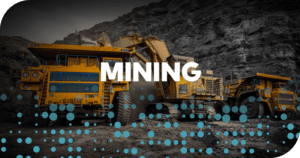How Bad Is Too Bad? Weather That Affects Flights

Aviation weather intelligence is a high consideration for the aviation industry. Pilots and passengers alike worry about flying in bad weather. The weather forecast is a crucial element of the pilot’s pre-flight checks, and flight operations will continually update their weather information during flight.
Thunderstorms, lightning, rain, fog, winds, snow, and ice, can all make for harrowing flights. But what is considered “too bad?” When should a flight be canceled, instead of delaying? What weather conditions should a flight steer clear once in the air?
Contrary to what many passengers believe, commercial airplanes can fly in almost all weather conditions and are rarely affected by lousy weather. When airports and airlines are expecting severe weather, they may implement planned cancelations to some flights. This implementation helps to minimize the delays to remaining flights. Although it may happen later than expected, it enables most passengers to get to their destination as quickly as possible.
AviationSentry Airline Edition provides highly accurate aviation weather forecasts. Utilize this powerful suite of tools to choose the fastest and safest routes, improve customer satisfaction, and reduce costly redirects and canceled flights.
Flying In Low Clouds
Low clouds are rarely a problem for airplanes. Clouds, in themselves, are not dangerous. The poor visibility arises as a result of these low clouds may cause a problem. Low clouds are not of concern unless the cloud extends down to the ground (this is called fog – and we’ll talk about it next!).
Flying In Fog
Fog is often patchy and location-specific – with some airports affected while others, even those who are geographically close, remain clear. All aircraft can be affected by fog and poor visibility, which can cause flight delays. Many commercial aircraft are equipped with autopilots that can land the plane in zero visibility. But “on the ground” and during the take-off phase when processes are manual, most air traffic delays occur.
When airport visibility drops below an acceptable Runway Visual Range, the airport enforces Low Visibility Procedures (LVPs). Namely, Air Traffic will reduce the number of aircraft taxiing and taking off to prevent accidents and incidents from occurring.
Many modern airplanes can land in even the densest fog using their automatic landing equipment. They can even land in zero visibility. However, it may then be impossible for the planes to taxi, as this is a manual process!
Flying in Heavy Rain
Rain doesn’t usually affect a flight much. Combining with hefty winds causes extra challenges to flight planning. The combo can even cause a change of route or a delay if the conditions are extreme. But generally speaking, airplanes are well-equipped to deal with a bit of the wet stuff!
Visibility is the critical consideration when it comes to heavy rain. While at higher cruising speeds, the airflow removes water from the plane’s windshield quite effectively. The pilot needs a clear visual view at slower speeds, such as landing or taxiing on the ground.
Heavy rain could affect visibility, but planes generally fly on instruments anyway, so this will not be an issue in itself.
Flying In (Normal) Wind
Wind speed and direction can make a flight time quite different than usual.
A tailwind – which pushes the aircraft forward through the air – will increase the aircraft’s ground speed and shorten the journey.
A headwind, however, is where the aircraft is flying against the wind direction. The result is the opposite, slowing the aircraft’s ground speed and making the journey time longer.
These time differences are demonstrated most dramatically with longer transatlantic flights.
For take-off and landing, airplanes usually move into the wind to reduce their ground speed. Crosswinds can also make take-offs and landings more challenging. To counteract this, airports will impose limits if the wind is moving across the runway. Many airports have runways facing different directions to mitigate against crosswinds, allowing pilots to use the runway that faces into the wind.
Flying In Strong Winds
Today’s airplanes are built and tested to withstand strong winds. Strong winds can make for a turbulent flight, which can be stressful for passengers. While turbulence can be a worry for passengers, it isn’t a genuine safety concern. We won’t even mention how this turbulence may play into airsickness!
Strong winds might be frightening for passengers and crew. Not to mention, turbulence makes serving meals difficult for the flight crew.
But as a safety concern, it is also possible for the crosswind component to be too high for a safe landing, although this is unusual in a modern airplane.
Flying In Snow Or Ice
Modern airplanes are also exceptionally well-designed to cope with freezing temperatures and snowfall once in the air.
So factoring in ice or snow, the main focus is:
- the condition of the runway and the taxiway at the airport,
- and on de-icing the aircraft before the flight.
Ice or snow should not be an issue once in the air, as most airplanes have de-icing equipment installed. Flight operations still need to beware of freezing rain, which can cause rapid ice build-up, too fast for even the de-icing equipment to keep up. If ice builds upon the wings of a plane, this can be dangerous.
Snow is not a significant problem when a flight is in the air. A pilot does not want to try landing on it unless used to doing that kind of thing.
Flight operations should also beware of freezing rain, which is dangerous as it can cause a quick build-up of ice on the wings. In conditions like this, it’s best for aircraft to stay on the ground.
Flying In Thunderstorms
Thunderstorms can be treacherous for aircraft. They often involve severe turbulence, which can cause structural damage, so steer clear.
Luckily, storms are usually limited to a reasonably small area, and it is possible to fly around them. Contrary to what many people believe about flying in thunderstorms, there is little, or no danger of a lightning strike. Airplanes occasionally get hit by lightning, but there is no danger to passengers even if this happens.
Flying In Sun And Heat
Today’s airplanes can operate perfectly safely in hot and sunny weather and high temperatures. But a high air temperature can change the plane’s performance.
Hot air is thinner than cool air, affecting the engines’ output and the aircraft’s aerodynamic capabilities. Hot air increases the required runway distance and reduces performance and the maximum payload.
While it’s rarely hot enough or too sunny for flights to be grounded, it’s something to be factored into the aviation weather data and the flight plan.
Using Aviation Weather Data
Understanding aviation weather data plays a massive part in ensuring an aircraft gets safely from A to B.
Different weather conditions can impact flights differently – from the typical wind direction to the more unusual challenges of heavy fog or ice and snow.
Constant monitoring of the day-to-day weather situation forms a crucial part of handling any flight.
AviationSentry Airline Edition provides highly accurate aviation weather forecasts. Utilize this powerful suite of tools to choose the fastest and safest routes, improve customer satisfaction, and reduce costly redirects and canceled flights.
There are plenty of free online resources for weather information. But too much depends on the weather to use less than the most accurate and detailed information available. Information is only available through the DTN AviationSentry Airline Edition program.










 Comprehensive weather insights help safeguard your operations and drive confident decisions to make everyday mining operations as safe and efficient as possible.
Comprehensive weather insights help safeguard your operations and drive confident decisions to make everyday mining operations as safe and efficient as possible. Learn how to optimize operations with credible weather and environmental intelligence. From aviation safety to environmental compliance, our comprehensive suite of solutions delivers real-time insights, advanced forecasting, and precise monitoring capabilities.
Learn how to optimize operations with credible weather and environmental intelligence. From aviation safety to environmental compliance, our comprehensive suite of solutions delivers real-time insights, advanced forecasting, and precise monitoring capabilities.